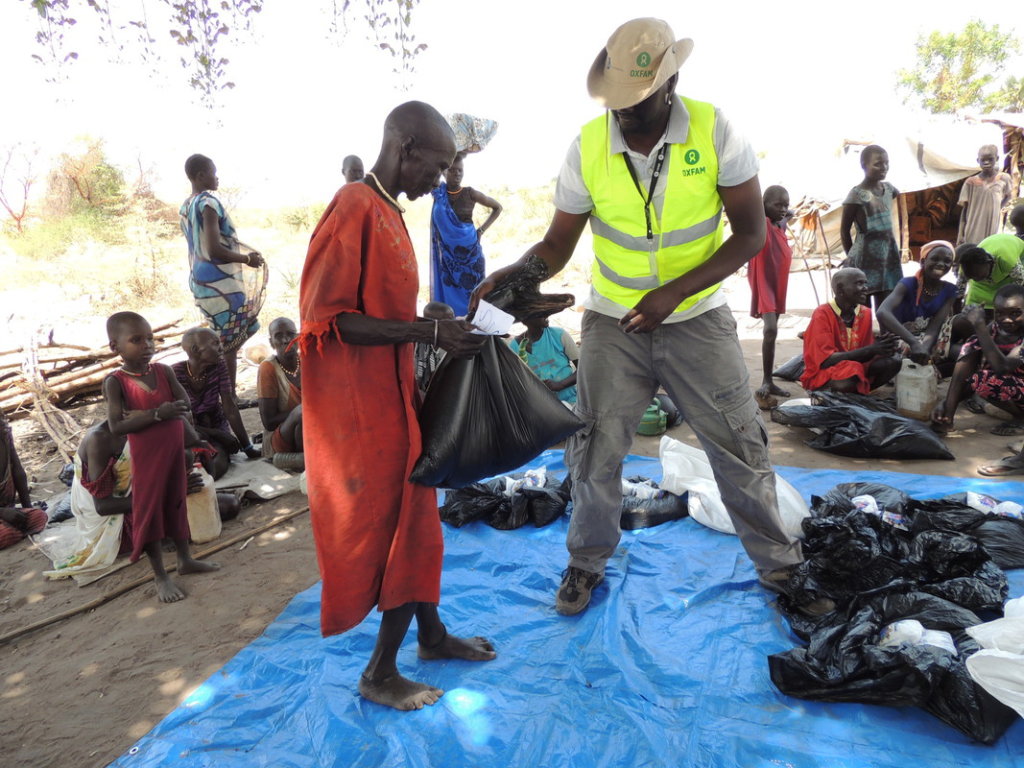By Oxfam | Fundraising Officer
A desperate food crisis has gripped East Africa. Serious droughts in Ethiopia, Somalia and Kenya have left millions at risk of starvation. Despite the arrival of some rains, the humanitarian crisis remains serious. 22.9 million people are affected by the drought in the region, and 13.6 million are experiencing severe food insecurity.
The drought has caused crops to fail and cattle to die while the lack of clean water increases the threat of cholera and other diseases. Famine is a real possibility in Somalia, where deaths as a result of the drought have already been recorded.
In South Sudan, over 5 million people – 40 per cent of the population – are facing extreme hunger, and over 60 per cent of the population is in need of humanitarian assistance; a humanitarian crisis driven by three years of a brutal civil war.
Civilians have been attacked, and schools and hospitals have been looted and burned. Tens of thousands of people have been killed. The fighting has forced 3.5 million people from their homes. As they flee, people lose their possessions, crops and income, and often get stranded in places where there aren’t enough facilities to support tens of thousands of new arrivals.
Although the rains are now beginning and people can start planting, it will be months until crops yield. Hunger is set to get worse until the end of July – the seasonal peak of South Sudan’s lean season.
Thanks to the generosity of our supporters, Oxfam has been providing immediate life-saving aid and working on longer term solutions across the region.
Oxfam’s Emergency response:
Ethiopia
Ethiopia’s humanitarian context is quickly changing and the gravity of the situation today has already surpassed the needs identified in January’s 2017 Humanitarian Requirements Document (a joint Government of Ethiopia and humanitarian partners document). A further increase in need is expected in the coming months given the increasingly confident local and international weather forecasting of poor spring rains this year – which would be the third consecutive weak or failed rains in the current drought belt.
As a result of the escalating needs, Oxfam’s drought response strategy has been revised, and we are now aiming to reach 1 million people, up from an initial goal of 700,000. So far:
Kenya
In Kenya, we aim to reach 600,000 people with assistance. Our primary focus is on the repair of water pumps, and cash assistance programming. There have been some rains in localised areas which could provide some relief, especially the rejuvenation of pasture. However the rains are predicted to be depressed and the food security situation remains unchanged in the short-term.
Somalia
According to UNOCHA 6.7 million people are in need of humanitarian assistance and parts of the country are on the brink of famine. In addition, increased competition for already scarce resources such as water could trigger further inter-communal tensions. Many people are relying on limited water sources which are unprotected and unsafe, exposing them to water borne diseases. The water shortage has led to outbreaks of waterborne diseases with reported increases in AWD and cholera.
South Sudan
Back in February, famine was declared in Leer and Mayendit, two counties of former Unity State; 100,000 people were facing famine, and 1 million more were on the brink. Since then Oxfam and other humanitarian organisations have raced to help stop the situation getting even worse.
But hunger hasn’t stopped. Although the rains are now beginning and people can start planting, it will be months until crops yield. Hunger is set to get worse until the end of July – the seasonal peak of South Sudan’s lean season.
Our current activities include:
Thank you for supporting Oxfam’s response across the region, saving lives and bringing hope.
Photo Credit: Lauren Hartnett/Oxfam
Project reports on GlobalGiving are posted directly to globalgiving.org by Project Leaders as they are completed, generally every 3-4 months. To protect the integrity of these documents, GlobalGiving does not alter them; therefore you may find some language or formatting issues.
If you donate to this project or have donated to this project, you can receive an email when this project posts a report. You can also subscribe for reports without donating.
Support this important cause by creating a personalized fundraising page.
Start a Fundraiser